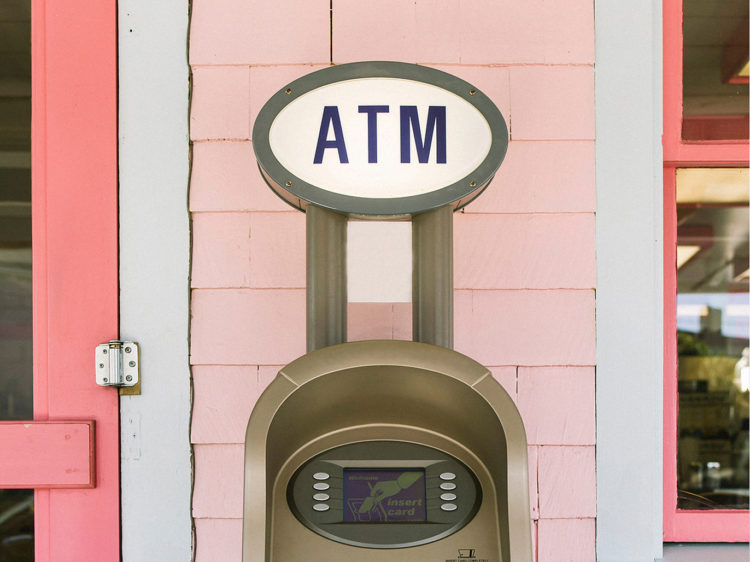Occasionally we’ll link out to relevant products that could be useful to our readers. Learn more about us here.
The registered education savings plan (RESP) is an account that people use to save for post-secondary education. RESPs come with tax-sheltered advantages, and a certain percentage of annual contributions can be matched by government grants. When a student is enrolled in a qualifying college, university, vocational training or apprenticeship program, they can withdraw money from their RESP to pay for tuition, textbooks, housing or other living expenses.
Understanding the RESP
The RESP came into being in 1998 as a way for parents and guardians to get a head start on saving for their child’s education. Grandparents, other relatives or family friends can open an RESP as long as they have a social insurance number (SIN) and know the child’s SIN. The person who opens the account is called the subscriber, while the child who receives the RESP’s proceeds is the beneficiary.
An RESP is a type of registered account, which means it has special tax-sheltered status from the Canadian government.
RESPs can hold cash like a savings account, but it can also hold different types of investments, such as stocks, bonds and other types of securities. Any earned interest, dividend income or capital gains on contributions grow tax-free as long as the money stays in the account. While there is no annual contribution limit, you can’t invest more than $50,000 over the lifetime of an RESP.
RESP contributions aren’t eligible for any kind of income tax deduction, and the actual contributions aren’t taxed when withdrawn. However, tax will need to be paid on the government grant money you’ve received and on any income earned from an investment. Fortunately, the money is taxed in the beneficiary’s hands and because students are doing more studying than earning a large income (though many do work part-time jobs), their tax rate should be low–perhaps even zero. To withdraw, the beneficiary must prove they’re enrolled part-time or full-time at an accredited institution.
RESP benefits
The RESP offers some good benefits for education savers:
Tax sheltered: Actual RESP contributions are never taxed. Interest and investment income such as dividends or capital gains are not subject to tax as long as the money remains in the account.
Government grants: The Canada Education Savings Grant (CESG) matches 20% of annual RESP contributions up to $2,500, for a maximum of $500 in grant money per year. The lifetime maximum an individual can receive from the CESG is $7,200. It’s essentially free money from the government. CESG money is only given out up until the end of the year the beneficiary turns 17. Low income families may be eligible for CESG top-ups and/or additional provincial grants.
Students can study abroad: As long as it’s a qualifying program at an accredited school, the beneficiary can use all contributions and grant money to attend school anywhere in the world.
RESP drawbacks
When considering an RESP, there are also a few limitations to be aware of:
No tax deduction: There aren’t any tax benefits for anyone who contributes to an RESP. If you contribute to your child’s RESP, you can’t claim any type of deduction on your personal income tax return.
Lifetime contribution limit: RESPs have a maximum lifetime contribution limit of $50,000 per person. This might be enough (or more than enough) to cover the cost of many domestic degrees, diplomas and training programs, but might not be enough to cover international tuition and living expenses if the student attends university in a foreign country.
Types of RESPs
There are three types of RESPs: individual, family and group/pooled. A person can have more than one RESP account at different providers, but the lifetime limit of $50,000 in contributions applies across all accounts.
Individual RESP: An individual RESP has one beneficiary. Anyone can open an individual RESP, and anyone can contribute. An individual RESP can be opened at any age—you can open one for yourself in high school, or in your 20s, 30s and beyond, as long as you haven’t maxed out your lifetime contribution room. RESPs don’t usually require minimum deposits or have a set contribution schedule. An individual RESP can be opened at any age. Contributions to RESPs can be made for up to 31 years after the plan is first opened, and plans can stay open for up to 36 years.
Family RESP: If you have more than one child, you can open a family plan that functions as one account. Family RESPs can only be opened by people related to the beneficiaries by blood or adoption, and all beneficiaries must be under the age of 21 when added to the plan. Contributions don’t have to be shared equally between children—if one doesn’t pursue higher education or there’s leftover money, it can be transferred to their sibling(s). However, individual lifetime limits for government grants still apply.
Group RESP: A group RESP is also called a pooled RESP, because all contributions are put into one account and invested with the contributions of hundreds of other plan members. Group RESPs can only be opened through independent companies called scholarship dealers, which make all the investment decisions. How much money your child receives depends on how much money is in the fund when they want to start withdrawals, and how many other children in the group are starting school at the same time. Group RESPs are an option for people who are confident they can meet the terms of a set contribution schedule and don’t want to manage their own investments. However, group RESPs generally aren’t recommended as a first choice because they charge higher fees, may only cover certain types of post-secondary education, and have stricter rules. If you want or need to withdraw your money early, you’ll lose out on investment gains and face hefty fees.
How to set up an RESP
Many people open RESPs when their children are babies and toddlers to give their contributions and investments as much time as possible to grow and compound. Also, keep in mind that government grants will only match contributions made up until the end of the year in which the child turns 17.
To open an RESP, you’ll need social insurance numbers for both yourself and your child. If you’re ready to open an RESP, here’s how to do it:
1. Select a type of RESP
You can choose an individual, family or group/pooled RESP based on the number of kids in your family, your time horizon, how often you want to contribute and how hands on you want to be with managing your investments. For example, individual and family RESPs give subscribers more control over their investments. Some RESPs require specific monthly contributions, while others allow you to contribute whenever you want.
2. Decide how you want to invest
You can manage your own self-directed RESP by setting up a trading account through a robo-advisor or discount brokerage, or get investment advice from a financial advisor. Each has different costs associated with trading, advising and managing your account. Here’s what you should know about each approach.
Automated: Robo-advisors offer a set-it-and-forget-it approach by asking you a few questions, assessing your risk profile and using algorithms to appropriately invest your money. You’re normally invested in a broad section of the market, such as in an S&P 500 or S&P/TSX Composite Index-tracking exchange-traded fund. Robo-advisors have low opening balance requirements and are inexpensive, with fees much lower than the cost of a financial advisor (0.4%-1% of your investments).
Robo-advisors often require little human interaction, but many platforms provide some financial advice in the form of online tools or access to a financial advisor. They’re advantageous for hands-off investors who don’t want a DIY investment portfolio.
Trade stocks commission-free and get a $10 cash bonus
Open a Wealthsimple Trade account to buy and sell thousands of stocks and ETFs commission-free. You’ll get a $10 cash bonus when you join.
Terms and conditions apply.
DIY: A discount brokerage is much more hands-on. You can pick your own stocks, bonds or funds that you want to invest in and trading fees are low (from between zero to $10 per trade depending on the institution). They can be a good fit for investors who want to trade frequently, though trading fees can add up. Discount brokerages don’t offer any financial advice.
Financial advisor: A financial advisor is someone who provides financial planning advice and can, in many cases, invest money on your behalf. The fees for a financial advisor are generally higher than a robo-advisor or a discount brokerage–often 1% to 2% of the assets they manage.
Once you’ve chosen an appropriate approach, the next is to choose the right investing service.
3. Choose a financial institution
Individual and family RESPs can be opened at banks, credit unions, caisses populaires, mutual fund companies, full-service or self-directed online brokers, or robo-advisors. Group RESPs are only available through scholarship dealers. Take your time to review each plan’s contribution rules, interest rates, withdrawal rules and investment options to find the best account for your family’s needs.
4. Fund your account
Once an RESP is open and ready to go, you can make your first contribution by transferring funds from an existing account. You can also set up automatic withdrawals from your chequing account to your RESP.
Investing with RESPs
RESPs can hold all kinds of investments including stocks, corporate and government bonds, guaranteed investment certificates (GICs), exchange traded funds (ETFs), mutual funds and index funds. RESPs have a shorter investment window than a retirement account—around 18 years—so the sooner you start saving and investing, the longer your money has time to grow and compound.
If your RESP is self-directed, your investment strategy doesn’t need to be complicated. In general, you’ll want to adjust your asset allocation from stocks in the early years (riskier) to fixed income and cash (less risky) as your child’s high school graduation date draws closer.
Post-secondary education is increasingly expensive, so the earlier you open an RESP, the better. For parents, guardians and relatives who can afford to contribute, an RESP is a good way to squirrel away money for a child’s future education, shelter investment income from tax, and earn free government grant money. Even if your child decides not to pursue further education after high school, there are options for withdrawing the cash, transferring money to their sibling(s), or enriching your own retirement fund.
RESP contribution limits
RESPs have a lifetime contribution limit of $50,000 per individual, and you can contribute to an RESP for up to 31 years after you first open it.
Every RESP is different. Some providers and accounts require you to commit specific monthly contributions for a set amount of time (and will penalize you for missing any payments), while others let you contribute money to RESP whenever you want.
RESPs don’t have annual contribution limits, but spacing out contributions can affect how much you receive in government grants. Remember, the CESG matches 20% of RESP contributions up to $2,500 a year, or a maximum of $500 in grant money per year.
To max out that offer, you would need to contribute at least $2,500 a year for 15 years. If you’re flush with cash you can contribute the lifetime maximum of $50,000 in a single year, but you’ll be missing out on free grant money by not spacing it out.
Any unused CESG matching room carries forward until the end of the year in which the beneficiary turns 17. However, you can only make up for unused CESG amounts one year at a time. So if you didn’t contribute to your child’s RESP in 2019 and missed out on up to $500 in CESG, you can carry forward that $500 into 2020 for a total of $1,000.
Including carry forward room, the maximum amount of CESG anyone can receive in one year is $1,000. This means that if you don’t start contributing to a child’s RESP until they’re older, or if you miss several years of contributing in a row, you might lose out on CESG money.
To stay eligible for CESG benefits at ages 16 and 17, an RESP must meet two conditions by the end of the year in which the beneficiary turns 15:
- A minimum of $2,000 was contributed to the RESP (and not withdrawn).
- The subscriber contributed at least $100 in any four previous years (they don’t have to be consecutive).
RESP government grants
Depending on your family’s household income, you may also qualify for additional RESP grants from the government.
Additional Canada Education Savings Grant: If your household income is below a certain threshold, this grant will kick in an extra 10% or 20% on every dollar of the first $500 contributed to an RESP each year. The additional grant is split into two income brackets:
- Household income of $0 to $48,535: Extra 20% on annual RESP contributions up to $500. For example, if you’re in this income bracket and contribute $1,000 to an RESP, you’ll receive $200 from the regular CESG and $40 in additional CESG funds.
- Household income of $48,535 to $97,069: Extra 10% on annual RESP contributions up to $500. If you’re in this income bracket and contribute $1,000 to an RESP, you’ll receive $200 in regular CESG and $20 in additional CESG funds.
Canada Learning Bond (CLB): Unlike the regular or additional CESG, no contributions are required to receive the learning bond. CLB eligibility is based on the number of children in a family and the net household income. For a household with 1-3 children, the adjusted net family income is $47,630 or less (2019). For four children it’s $53,740 or less, and for five children it’s $59,876 or less. The scale slides up to $127,362 or less for households with 16 children.
The CLB pays a lifetime maximum of up to $2,000 per child:
- $500 for the first year of eligibility.
- An additional $100 for each year the child is eligible, up to and including the year they turn 15.
Provincial grants: Some provinces also offer grants to encourage residents to save for their children’s education, such as the British Columbia Training and Education Savings Grant and the Saskatchewan Advantage Grant for Education Savings.
RESP withdrawals
Only plan subscribers (the person who opened the RESP) can make withdrawals. When withdrawals are used to pay for educational expenses, they’re classified as one of two categories:
Post-Secondary Education Payments (PSE): The portion made up of personal contributions. All PSE contributions can be withdrawn tax-free. PSE withdrawals can be sent to the subscriber or beneficiary.
Education Assistance Payments (EAP): The portion made up of government grant and bond money, as well as investment earnings. EAP withdrawals are sent to the beneficiary, and are taxed as income in the year they’re withdrawn at the beneficiary’s marginal tax rate.
To make a withdrawal, the subscriber has to contact the RESP provider and provide proof of the student’s enrollment, such as a letter from the school’s registrar, a tuition receipt, timetables or course schedules. When making a withdrawal, make sure to specify where the money is coming from (PSE or EAP).
RESP withdrawal limits
There’s no limit on withdrawing PSE contributions. If the student beneficiary is enrolled in a full-time program, they can withdraw a maximum of $5,000 in EAP funds over the first 13 consecutive weeks. After that, there’s no limit on EAP withdrawals.
Students enrolled in a part-time program can withdraw up to $2,500 in EAP funds during the first 13 consecutive weeks, with no limit on withdrawals after that.
What if your child doesn’t go to university?
If your child decides higher education isn’t their thing, there are a few things you can do with RESP money.
Transfer it to another child: If you have a family RESP, you can transfer leftover or unused contributions to a sibling as long as they’re under the age of 21 and named as a beneficiary. However, the individual lifetime limit of $7,200 for CESG applies, so any government grant money over that amount must be returned.
Withdraw it: You can withdraw your original RESP contributions tax-free. Interest and investment earnings are considered an “accumulated income payment” and will be taxed as income when withdrawn from the RESP, plus an additional 20% tax (12% in Quebec).
Roll it over: You defer paying tax on accumulated income payments money by transferring up to $50,000 to a registered retirement savings plan (RRSP). To do this, the child must be over the age of 21, the RESP must be at least 10 years old, and you and/or your spouse must have contribution room in your RRSPs. Only contributions and accumulated income payments can be transferred to an RRSP, and all government grant money must be returned.
Keep it open: If your child decides to take a gap year after high school—or a few gap years—but post-secondary education might still be a possibility, you don’t have to close the RESP right away. An RESP can stay open for up to 36 years in case they change their mind.











